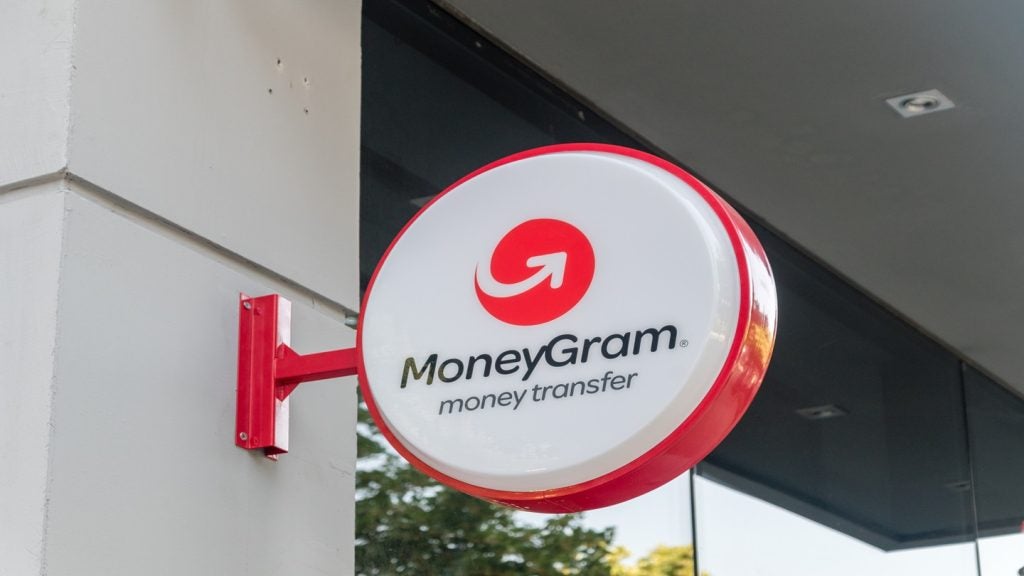Unlike HSBC and Citigroup, which have been disposing of retail banking operations in Latin America, Scotiabank is investing in the region.
Scotia has seen strong performances at its subsidiaries in the Pacific Alliance (Chile, Colombia, Mexico, and Peru) region.
Mexico, Peru, Colombia and Chile are core to the bank’s strategy, and they continue to achieve more robust GDP growth than Canada and the US.
In Mexico, Scotiabank has around 2.8 million retail banking customers, followed by 2.5 million in Chile, 1.6 million in Peru, and 1.5 million in Colombia.
In January 2016, Scotiabank appointed Ignacio "Nacho" Deschamps as Strategic Advisor, Global Digital Banking to Scotia CEO Brian Porter.
Deschamps, who was formerly chairman and CEO of BBVA Bancomer, Mexico's largest bank, has extensive FinTech relationships and digital experience in the US and other markets. He was appointed as Scotiabank’s group head, International Banking and digital transformation in February 2016.
Investments
Scotiabank is investing heavily to cater for digital consumers in Latin America. “We’re digitising our processes, implementing digital business models, and partnering with FinTechs so we can provide customers with faster service and better offers,” Stacey Madge, senior vice president of International Retail Banking at Scotiabank tells RBI.
Over the last five years, mobile banking penetration has grown by 700% in Latin America, while Scotiabank has seen its mobile banking penetration grow by 70% year-on-year, Madge says.
Scotiabank is investing $185m in a new core banking technology system in Mexico to enable staff to provide high-quality customer service and advice. It has also enhanced its Mexican online and mobile banking platform and will be rolling out this enhanced mobile and online banking platform across its Latin American and Caribbean subsidiaries.
Later this year, and into the next, Scotiabank will offer enhanced and more personalised services to customers such as online advice, tools and pre-approved solutions. These investments are part of a multi-country programme to increase primary customer relationships through online and mobile channels.
In January 2016, Scotiabank launched four prototype digital branches in Mexico City with tablets and smartphones that enable customers to do their online and mobile banking, use financial planning tools, and provide feedback on their banking experience.
Mobile sales officers
Scotiabank has equipped its mobile sales officers in Colombia and Chile with tablets for use outside the branch, with other countries in the Caribbean and Central America to follow later in 2016.
Bank officer productivity is expected to improve by 20% as a result of tablets simplifying the application process while reducing the time to acquire products.
“In some Latin American countries, people don’t want to go to the branch,” says Madge. “They want you to come to them. So our mobile sales officers have tablets so they can take a full digital product application and get a digital signature and digital copy of the customer’s ID. In Chile, you can use your fingerprint, and all your key demographic information is immediately prepopulated onto the tablet via your fingerprint.”
Scotiabank is also equipping its Premium banking officers in Chile with tablets so they can visit customers at their home or place of work. The bank will shortly start equipping its Premium banking officers in other countries with these tablets.
Customer targets
Across its Latin American markets, Scotiabank is primarily targeting the emerging middle, middle and upper middle class (or mass affluent).
Mass affluent customers are served through Scotia’s Premium Banking brand in which they have a Premium Service model, Premium products and premium privileges.
This has been very successful in growing the bank’s presence in this segment. In some markets, it has dedicated brands to serve the consumer and microfinance segment such as CrediScotia in Peru.
Credit cards
Madge says credit cards are an important part of Scotiabank’s business in Latin America. “Credit cards are a big priority for us.
“We recently formed an alliance with Linio, Latin America’s largest online retailer, which includes launching a co-branded Visa credit card in Colombia and Mexico. We will soon be offering digital applications for the card in Mexico with immediate approvals.”
In May 2015, Scotiabank bought 51% of Latin American retailer Cencosud’s Chilean credit card business.
“We also have a partnership with Cencosud in Colombia through (Scotiabank-controlled) Banco Colpatria,” says Madge.
As part of Scotiabank’s recent purchase of Citigroup’s retail banking operations in Costa Rica, Panama, and Peru, it acquired Citi’s credit card businesses in those countries.
“What’s nice about our Citi credit card acquisition is the American Airlines AAdvantage alliance and loyalty programme, which is very beneficial for our customers,” says Madge. “Citi has been a great acquisition for us in the credit card space and in the premium banking space – mass-affluent customers.”
A unique aspect of the Latin America banking market is the use of biometric authentication. “Many Latin American countries have collected their citizens’ fingerprints for years, for example Chile,” Madge says.
“This was done to formalise the economy, but it enables banks to improve the process of authentication. In our Cencosud stores, you can use your fingerprint to get a pre-approved loan and pre-approved credit card. We have introduced kiosks which instantly print out a credit card in the store.”
Branch transformation
“We recently carried out a project with IDEO, a leading design firm, in collaboration with Scotiabank Canada. IDEO did a lot of ethnographic research with us and our customers to understand the needs of Latin American consumers.
“Working with IDEO, we designed four digitally-enabled branch prototypes in Mexico City. These range from a flagship branch with specialist services down to an in-store branch which could be as small as 250 square feet in size.
“As part of our branch transformation planning, we did research across four of our major countries – Chile, Colombia, Mexico, and Peru. The intention is for the prototype digital branches deployed in Mexico City to become our new standard for branches when we build a new branch or refurbish an existing branch.”
Madge adds that Scotia is trying to enable a distinctive and proactive service culture that helps customers understand its self-service channels and provides helpful service steps. A key element of this involves deepening relationships with customers, holding needs-based conversations with them, and fostering a learning environment for customers.
“What is important for us is to make our branches as digital as possible with tablets throughout the branches where customers can do online and mobile banking, complete customer feedback surveys, and do simple, goals-based planning through the “Mi Plan” (My Plan) app.
“These tablets, which are being rolled out with our new branch formats starting with our prototype branches in Mexico, can be used on an unattended basis or with a customer service and sales officer in attendance.”
Financial education is a big opportunity in Latin America, so the bank has held learning events and provided financial tools focused on helping clients meet their goals. Around its Latin American branches, tips are posted on signs to help customers become better off, and tellers also give customers financial literacy tips.
“In Canada, we talk a lot about financial advice and savings for retirement to our customers. In Latin America and the Caribbean, we talk about financial literacy. Sometimes, when customers are given a credit card, they have to be educated on how to use the card and make sure they don’t spend up to their credit limit and compromise their ability to make repayments. Unlike Canadian consumers, Latin American and Caribbean consumers’ goals can be more near-term – ‘something I will do a year or two from now’ versus ‘20 years from now.’
We are trying to train our front-line staff and deploy digital tools to keep these customer nuances in mind.
Strengthening customer relationships in Latin America
“Right now, across many of our markets, our people-based channels are a source of differentiation. We tend to do well in terms of customer feedback for our people-based channels
“Now we want to be the best bank in the region for digital customer experience. We want customers to able to do their sales and service activities at their channel of choice without having to restart their application or refile a complaint.
“Across our Latin American markets, we are trying to build out the exact same technology platform, and we also share learnings across markets. This means that any innovation that is implemented in one market can be used to benefit another market, instead of having separate platforms in different markets.
“If you look at a lot of digital leaders like Apple, Uber, Netflix or Spotify, they offer the same experience irrespective of what country you are in. So the experience we give a customer in Mexico will be the same experience as they will want in Chile or Peru.
“To strengthen our customer relationships in Latin America, we’re really investing in CRM and analytics. We are currently launching a new front-end CRM platform in our branches starting in Chile. This new platform enables sales officers to have a more natural conversation with customers and more readily identify opportunities to help them become better off or deepen the relationship with clients.”
Some of the screens have been really simplified for sales officers so they can see at a glance if a customer has a complaint, if they have a good credit rating, if they have a pre-approved offer, or what assets and liabilities the customer has. The sales officer can also tell if the customer is using our online and mobile banking service and whether they are primary customers. This means the sales officer has a much more natural conversation with the client.
“Our new CRM platform ties into our analytics platform. We’re spending a lot of time in the bank focusing on analytics and working with FinTechs in the area of credit decisioning and using non-traditional forms of data for credit decisioning, collections and fraud management.
New digital offerings
A big digital initiative for Scotia is its new online and mobile banking offering that is going live in Mexico, followed by the Caribbean and Panama. Chile, Colombia and Peru will follow after that.
Madge says that the key to developing deeper relationships with customers is to make it easier for them to do their banking with the bank. So it has simplified every customer journey from log-in to paying bills and checking balances to make everything very easy. As part of this, it has made a major investment in consulting customers and researching their journeys.
Scotiabank Canada has recently introduced Touch ID and its Android equivalent for mobile banking. It will use the same technology as Scotiabank Canada to roll out fingerprint authentication into its international markets.
“Number one is about the customers becoming more digital and their expectations being set by digital leaders (such as Uber). Also there is 100% mobile phone penetration and over 50% smartphone penetration in Latin America, which is also the fastest growing internet population in the world and has active social media.
“Latin American digital transactions have been growing at 40% percent driven by Uber, Spotify and online retailers. So the consumer digital experience is very important to us, as we think about how fast we need to go.
By digitising our processes, we can lower our cost to serve. The cost of a digital transaction is a couple of percent of the cost of a branch transaction, so it’s very cost-effective for us to invest in digital channels to improve the customer experience.”
We are offering digital product sales in Latin America primarily in Chile, which is our most digital market in the region, Colombia, Peru, and Mexico. Later this year, we will be accelerating digital sales in Mexico.
Some products such as preapproved loans or credit cards or credit line increases are very natural candidates for selling through digital channels – you can do these largely via digital. So we’re putting a lot of focus on our digital sales agenda.
In Canada, we’ve been setting up digital factories to bring together IT, risk, and compliance teams to re-engineer our processes with our digital sales agenda in mind. These digital factories will feed into what we’re doing in Latin America.
Scotiabank in Latin America and the Caribbean
Scotiabank is the only Canadian retail bank to operate in Latin America. Its four core retail banking markets in Latin America are Chile, Colombia, Mexico and Peru. It also has operations in Uruguay, Costa Rica, El Salvador, and Panama as well as in 21 Caribbean countries including the Dominican Republic and Puerto Rico.
In February 2016, Scotiabank completed its approximately $360m purchase of Citigroup's consumer and commercial banking operations in Costa Rica and Panama, boosting its customer based in these countries from 137,000 to 387,000.
Scotiabank acquired Citi’s Peruvian retail banking operation in May 2015, and also bought a 51% stake in Latin American retailer Cencosud’s financial services business in a 15-year strategic alliance. The partnership includes the management of Cencosud's Chilean credit card portfolio and the provision of additional products and services to customers of both organisations.
In Peru, Scotiabank’s CrediScotia subsidiary offers credit cards and loans to lower-income consumers and microfinance loans to small businesses. Scotiabank also has consumer finance operations in Mexico and Uruguay.







